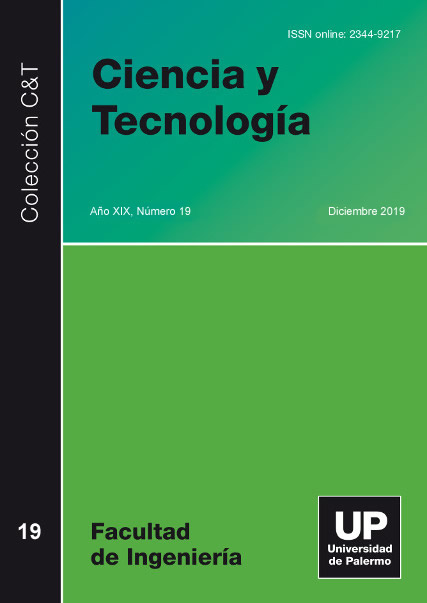Method to complement the generation of web application codes from UML Class Diagram
Abstract
In the development of web applications the greatest effort is focused on the generation of code, however, the research work on code generation is focused on solving design problems, in addition the case tools generate limited or incomplete code and do not have the specifications formal for web application development. In this article, we propose a new approach to complete the generation of codes from the UML class diagram, the approach is based on analyzing the file of the class diagram and then generating the code; we have defined a design model as a meta-model, the model has the formalism of the architecture by layers and is represented by a profile with an XML extension, the lines of XML code are extracted from the file that contains the class diagram, they are compared with the meta-model through algorithms and then the code is generated for web applications; a tool has been developed to validate our proposal between the generation of automatic code and the generation of manual code; using the generation time indicator, we show that code generation is reduced by more than 98%.
Downloads
References
Almuallim, H. (1996). An efficient algorithm for optimal pruning of decision trees. Artif. Intell, 347-362.
Basso, F. P. (2016). Automated design of multi-layered web information systems. Journal of Systems and Software, vol. 117, 612-637.
Bennett, J. (2010). Aspect-oriented model-driven skeleton code generation: A graph-based transformation approach. Science of Computer Programming 75, 689_725.
Clemente, P. (2011). Managing crosscutting concerns in component based systems using a model driven development approach,. The Journal of Systems and Software 84 , 1032–1053.
Domínguez, B. P. (2012). A systematic review of code generation proposals from state machine specifications. Information and Software Technology 54, 1045–1066.
Eclipse Luna. (21 de Abril de 2018). Obtenido de www.eclipse.org/downloads/packages/eclipse-modeling-tools/lunasr2
Garrigós, I. (2010). Specification of personalization in web application design. nformation and Software Technology, 991–1010.
Hat, R. (30 de 09 de 2019). http://www.hibernate.org/.
IBM. (20 de Agosto de 2018). IBM Rational Rose. Obtenido de http://www-01.ibm.com/software/awdtools/ developer/rose/
JBOSS. (23 de 09 de 2019). http://richfaces.jboss.org.
Magdalenic, I. (2012). Autogenerator: Generation and execution of programming code on demand. Expert Systems with Applications, 2845–2857.
Mamas, E. (2000). Towards PortableSource Code Representation Using XML. 7th WCRE’2000.
Manoli, A. (2011). Generating operation specifications from UML class diagrams: A model transformation approach. Data & Knowledge Engineering, 70, 365–389.
Mehmood, A. (2013). Aspect-oriented model-driven code generation: A systematic mapping study. Information and Software Technology vol. 55, 395–411.
Microsoft. (23 de 09 de 2019). https://visualstudio.microsoft.com.
Microsystems, S. (04 de Febrero de 2016). JSF. Obtenido de https://javaee.github.io/javaserverfaces-spec/
MKLab. (29 de 05 de 2019). http://staruml.io/.
Papyrus. (30 de Octubre de 2018). Obtenido de http://www.papyrusuml.org/
PHP. (30 de 06 de 2018). Obtenido de PHP: www.php.net
Pinto, M. (2012). Deriving detailed design models from an aspect-oriented ADL using MDD”. The Journal of Systems and Software, 85, 525– 545.
Piraquive, R. G. (2015). Analysis and Improvement of the Management. IEEE Latin America Transactions.
PrimeFaces. (23 de 09 de 2019). https://www.primefaces.org/.
Resig, J. (29 de 05 de 2019). https://jquery.com.
Rincón, M. (2011). Generación Automática de Código a Partir de Máquinas de Estado Finito. Computación y Sistemas Vol. 14 No. 4, 405-421.
Ruiz Catalan, J. (2010). Compiladores Teroria y Implmentación. Madrid: Grupo RC.
Selic, B. (2003). The pragmatics of model-driven development. IEEE Software 20 (5), 19–25.
Thuma, T. (2012). FeatureIDE: An Extensible Framework for. Science of Computer Programming.
Tigris.org. (25 de Setiembre de 2018). Open Source Software Engineering Tools. Obtenido de ArgoUML Modeling Tool: http://argouml.tigris.org
Vega Fajardo, A. (30 de Octubre de 2018). Generación Codigo. Obtenido de www.speeddatasoftware.com/speed/gca.html
The articles published in the journal Ciencia y Tecnología are the exclusive property of their authors. Their opinions and content belong to their authors, and the Universidad de Palermo declines all responsibility for the rights that may arise from reading and/or interpreting the content of the published articles.
The reproduction, use or exploitation by any third party of the published articles is not authorized. Its use is only authorized for exclusively academic and/or research purposes.









